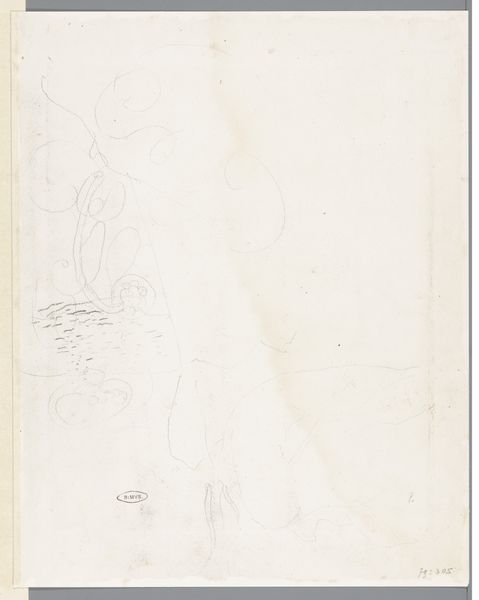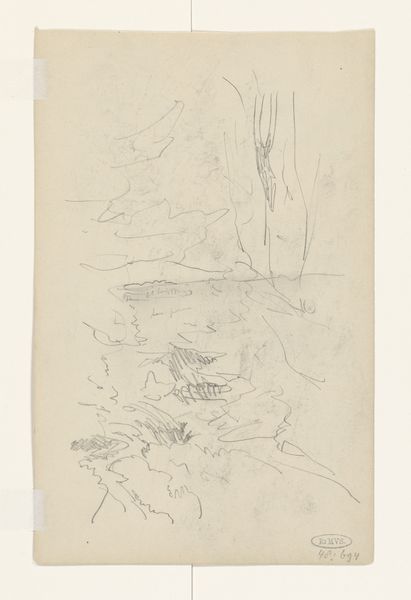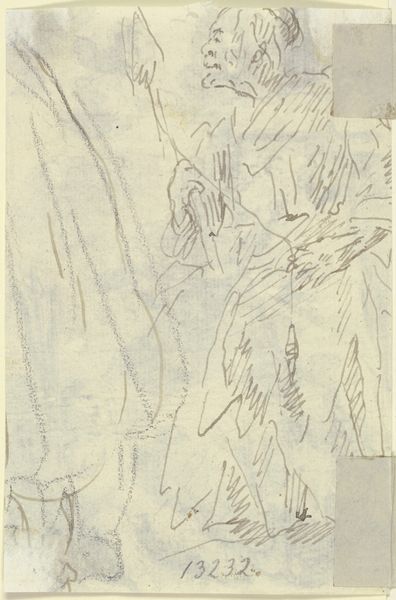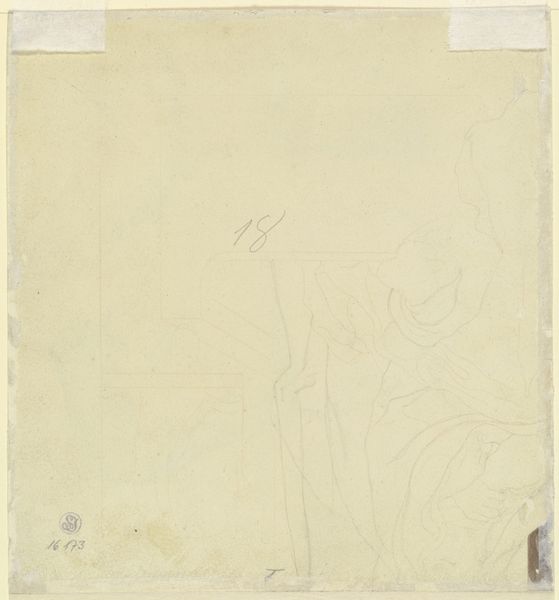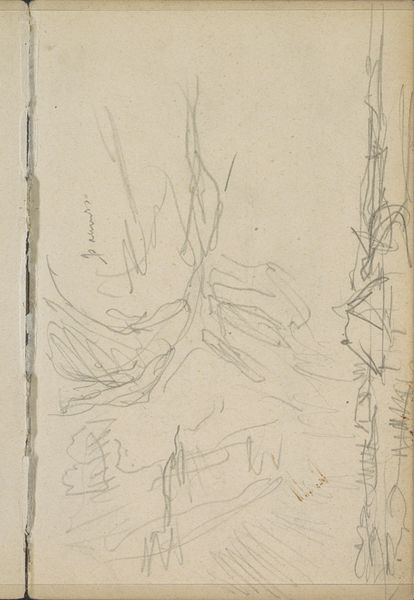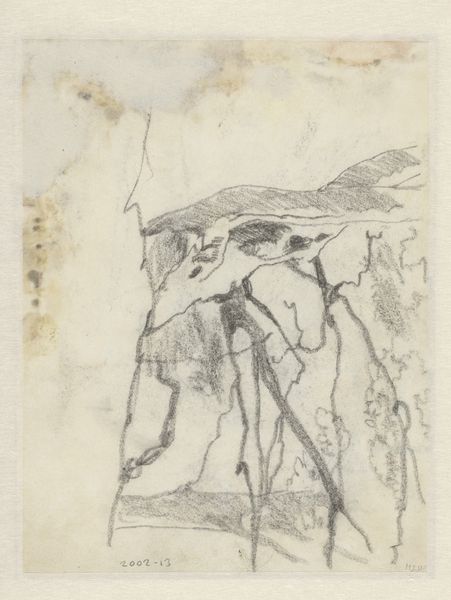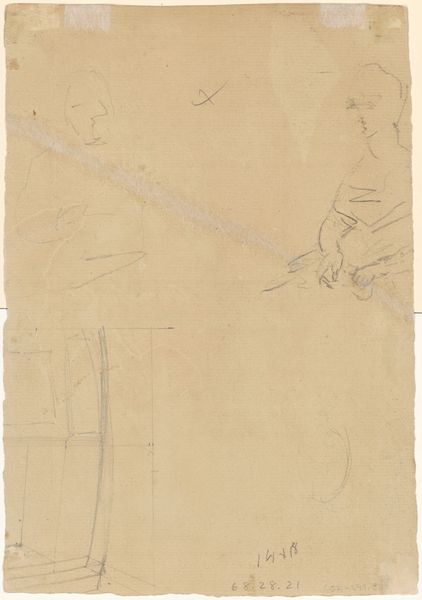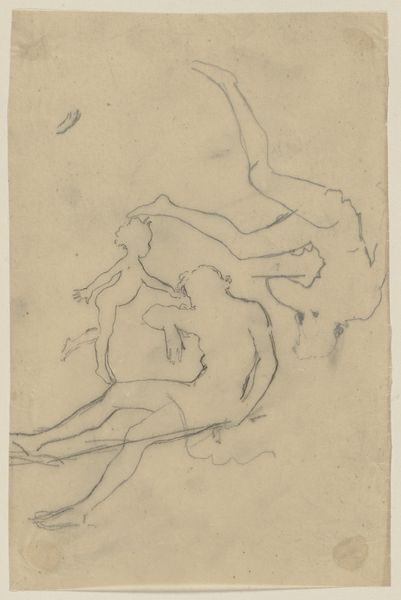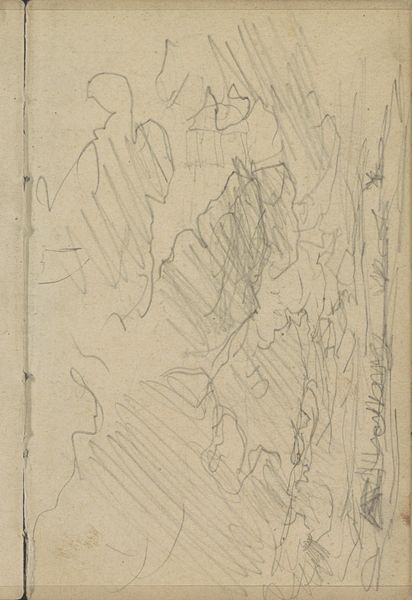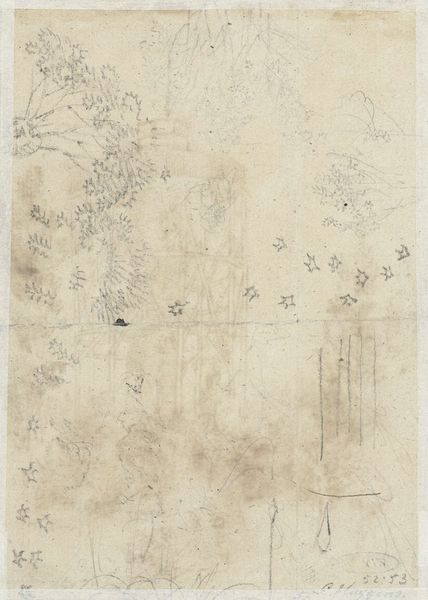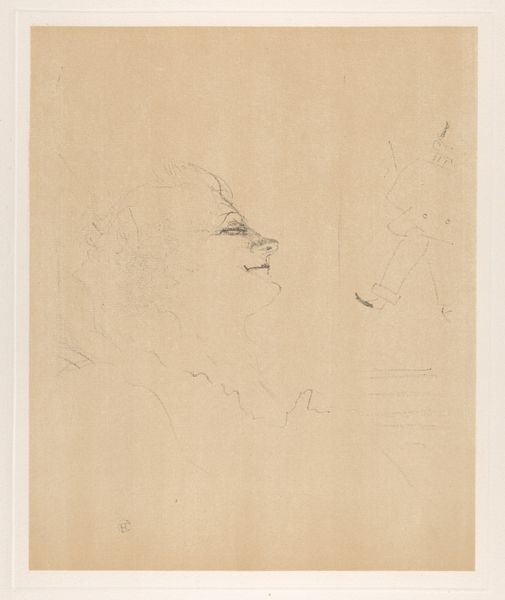
drawing, ink, chalk
#
drawing
#
baroque
#
figuration
#
ink
#
chalk
#
nude
Copyright: Public Domain
Curator: Looking at this fascinating drawing entitled "Ein Arm, ein Knie, ein Fuß sowie eine liegende Gestalt"—"An Arm, a Knee, a Foot and a Lying Figure"—we can observe the hand of Gaspare Diziani. He created this study in ink and chalk. The artwork currently resides in the Städel Museum. Editor: Immediately, there's a raw, anatomical feel to these sketches. Almost as if these limbs and figure are trying to break free from the paper itself. It’s quite visceral. Curator: Diziani, being a proponent of the Baroque, imbues these studies with the dramatic sensibility of that period, which might account for the sense of energetic tension you describe. Do you see within the fragmented presentation of the body elements, perhaps, some traditional symbolism? Editor: The isolated body parts, especially the foot and hand, can be potent symbols in both religious and secular contexts. In many traditions, feet symbolize groundedness, movement, even pilgrimage. And the hand, with its capacity to create and touch, obviously carries significant weight as a signifier of action. The incomplete, sketched figure itself could speak to a soul in transition, incomplete narratives of suffering and transcendence, depending on the artist’s intent and the period’s broader iconography. Curator: Certainly. This artistic pursuit, common among baroque artists, connects strongly with power structures, and the human bodies in question—male and able-bodied by appearance—demonstrates a conscious, but potentially harmful understanding and enforcement of gender dynamics in the artwork. Would you agree that this approach contributes to the systemic subordination, suppression, and discrimination towards alternative social identities and/or presentations? Editor: It is, of course, problematic. We have to consider that there is perhaps also another aspect; that there’s beauty in portraying the perfect bodies celebrated and promoted throughout a given period of history; one simply needs to understand its deeper ramifications for social equality, for then and now. Curator: These kinds of early figural drawings by masters such as Gaspare Diziani, and your insights, open so many productive lines of thought when attempting to grasp what imagery might hold at different historical moments. Editor: Indeed, and for understanding the evolution of artistic vision across cultures and eras, works such as this remain vital resources.
Comments
No comments
Be the first to comment and join the conversation on the ultimate creative platform.
